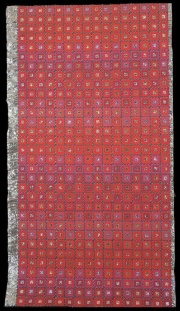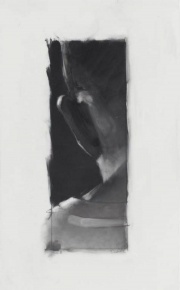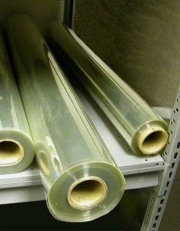Difference between revisions of "Mylar"
| Line 38: | Line 38: | ||
== Additional Information == | == Additional Information == | ||
| − | DuPont Teijin: [ | + | DuPont Teijin: [hhttp://69.67.54.76/FilmEnterprise/default.asp?Version=US Films Database] |
== Sources Checked for Data in Record == | == Sources Checked for Data in Record == | ||
Revision as of 17:43, 23 November 2019
Description
[DuPont Teijin Films, Hopewell, VA] A registered trademark for a series of optically clear, colorless, thermoplastic polyester films. First introduced in the early 1950s, Mylar® is composed of polyethylene terephthalate. It is a biaxially oriented film that is chemically inert and dimensionally stable. Mylar is an effective barrier to moisture, oil and grease. It has been used for lamination, coating, embossing, printing, and dyeing. Mylar has been also used for heat seal packaging. Mylar® type D sheets are uncoated and have been used for enclosing photographs and coins as well as for making photocorners.
Note: Mylar® type D sheets were discontinued September 2001 by DuPont
Synonyms and Related Terms
PET; Mylar [Du Pont]; Hostaphan [Mitsubishi]; Claryl [Toray]; 3M Polyester [3M]; Questar {Filmquest]; polyesterr; polyethylene terephthalate; tereftalato de polietileno (Esp.)
Physical and Chemical Properties
Resistant to cold acids, weak alkalis, bleach and most organic solvents. Degrades in strong alkalis, strong hot acids, cresol.
For a 1 mil film: Oxygen transmission = 19-32 ml/m2d; Water vapor transmission = 45-60 g/m2d;
| Melting Point | 250-260 |
|---|---|
| Density | 1.38 |
| Refractive Index | 1.54, 1.72 |
Hazards and Safety
Difficult to ignite. Burns with a shiny, yellow-orange, sooty flame. Self-extinguishing.
Additional Information
DuPont Teijin: [hhttp://69.67.54.76/FilmEnterprise/default.asp?Version=US Films Database]
Sources Checked for Data in Record
- G.S.Brady, G.S.Brady, Materials Handbook, McGraw-Hill Book Co., New York, 1971 Comment: p. 625
- Marjorie Shelley, Marjorie Shelley, The Care and Handling of Art Objects, The Metropolitan Museum, New York, 1987
- Caring for your Collections, Arthur W Schulz (ed.), Harry N. Abrams, Inc. , New York, 1992
- Pam Hatchfield, Pam Hatchfield, Pollutants in the Museum Environment, Archetype Press, London, 2002
- Marjory L. Joseph, Marjory L. Joseph, Introductory Textile Science, Holt, Rinehart and Winston, Fort Worth, TX, 1986
- Identification of Textile Materials, The Textile Institute, Manchester, England, 1985
- Wikipedia, the free encyclopedia, at http://www.wikipedia.com Comment: http://en.wikipedia.org/wiki/Mylar (Accessed Sept. 10, 2005)
- Teri Hensick, Teri Hensick, contributed information, 1998


